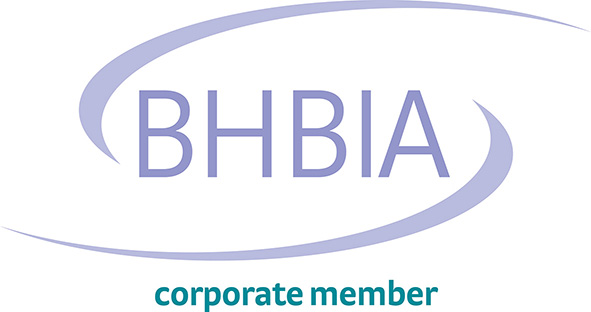Market Research Glossary
Market Research Glossary
There are currently 98 names in this directory beginning with the letter D.
Data Cleaning
Data cleaning involves the detection and removal (or correction) of errors and inconsistencies in a data set or database due to the corruption or inaccurate entry of the data. Incomplete, inaccurate or irrelevant data is identified and then either replaced, modified or deleted.
Data Collection
It is the gathering of information (figures, words or responses) that describes some situation from which conclusions can be drawn.
Data Collection Company
It is an enterprise or agency that supplies trained interviewers for clients and receives payment for services delivered. The service is responsible for hiring and training of interviewers, executing a client's job exactly as specified, editing and validating each interviewer's completed assignment.
Data Collection Instrument
It is any device that is used to gather information from respondents, eg questionnaires, video recorders, tape recorders.
Data Processing
It is the counting and tabulation of raw facts (ie data) into a form that is suitable for future use. This term is usually associated with computer tabulations.
Data Protection
National and international laws that cover the appropriate and required methods to be used in protecting data privacy. Organizations also have guidelines to be followed for data privacy, in which companies must adhere to the guidelines in order to be associated with the organization (see ESOMAR and ARF).
Data Reduction Plan
It is a set of instructions for editing and coding the questionnaire and specifies how the data should be evaluated for inconsistencies, skipped questions, etc, and then verified.
Data Warehouse
A data warehouse is a relational database formed to analyze and perform query processing. Warehouse stores data retrieved from historical transactions; however, it also contains data from various other sources.
Database Management Software
The database software market consists of sales of database software which are used to develop, modify and maintain database records and files.
Day After Recall
It is a standard measure of the impact of a TV commercial where respondents’ recollection of a commercial is tested the day after they are exposed to it.
Daytime Population
The concept of daytime populations refers to the number of people, including workers, who are present in a city or town during normal business hours.
Debranding
It is the removal of brand names, packaging or other material that would enable research participants to identify a brand.
Debriefing
Debriefing is a report of a mission or project or the information so obtained. It is a structured process following an exercise or event that reviews the actions taken.
Decennial Census
The data collected by the decennial census are used to determine the number of seats each state has in the U.S. House of Representatives.
Decentralised Research Function
It is where the marketing researchers are spread throughout an organisation and are not located together.
Deductive Research
The deductive approach involves beginning with a theory, developing hypotheses from that theory, and then collecting and analyzing data to test those hypotheses.
Deduping
Deduplication, or deduping for short, is the process of removing identical entries from two or more data sets such as mailing lists. Also known as merge and purge, deduping can be done for a lot of reasons.
Degrees of Freedom
It refers to the number of ways in which values could be assigned within a system. For example a table of observations with p rows and q columns has (p-1)(q-1) degrees of freedom. (In a sample of size n grouped into k intervals, there are always (k-1) degrees of freedom, because if (k-1) frequencies are specified, the other is determined by the total size n.)
Deliberated Poll
The typical deliberative opinion poll takes a random, representative sample of citizens and engages them in deliberation on current issues or proposed policy changes through small-group discussions and conversations with competing experts to create more informed and reflective public opinion.
Delphi Approach
It is an approach to forecasting where a group of people produce separate forecasts and then each member is given information about the other forecasts and asked to revise their original estimate. The objective of the approach is to converge forecast estimates
Delphi Technique
The Delphi method is a forecasting process framework based on the results of multiple rounds of questionnaires sent to a panel of experts. Several rounds of questionnaires are sent out to the group of experts, and the anonymous responses are aggregated and shared with the group after each round.
Demand Artifacts
are the responses given when respondents attempt to guess the purpose of the questions being asked. Demand artefacts can be the result of experimental conditions.
Demand Bias
Corruption of the research when the respondents assume to know or actually know the research agenda. This can occur when the research sponsor is revealed to the respondents.
Demographic Information
It is based on the age, gender, life-cycle stage, income and occupation of consumers.
Demographics
Demographic analysis is the study of a population based on factors such as age, race, and sex. Demographic data refers to socio-economic information expressed statistically, also including employment, education, income, marriage rates, birth and death rates and more factors.
Demography
The changing number of births, deaths, diseases, etc. in a community over a period of time; the scientific study of these changes.
Dendogram
It is diagram that shows a hierarchy and the relation of subsets in a structure. It branches like a tree and is usually read downwards from the main trunk.
Deontology
It is a non-consequential approach to evaluating ethics, whereby the degree of ethicalness depends on the intentions behind the decisions rather than the outcomes or actions that result.
Dependence Techniques
are types of multivariate analysis techniques that are used when one or more of the variables can be identified as dependent variables and the remaining variables can be identified as independent.
Dependent Variable
usually denoted as y, is a variable that is influenced to some extent by one or more other (independent) variables.
Depth Interview
An in depth interview is a loosely structured interview. It allows freedom for both the interviewer and the interviewee to explore additional points and change.
Descriptive Function
The describing function method attempts to predict characteristics of those oscillations (e.g., their fundamental frequency) by assuming that the slow system acts like a low-pass or bandpass filter that concentrates all energy around a single frequency.
Descriptive Research
It is a form of conclusive research that aims to describe a product or market or identify associations among variables.
Descriptive Studies
Descriptive research is defined as a research method that describes the characteristics of the population or phenomenon studied.
Design
The design allows researchers to hone in on research methods that are suitable for the subject matter and set up their studies up for success.
Design Control
Design controls designate the application of a formal methodology to the conduct of product development activities.
Designated Marketing Area (DMA)
A designated market area (DMA), also referred to as a media market, is a region of the United States that is used to define television and radio markets.
Desk Research
It is the systematic examination of all available secondary data in the context of a particular marketing research problem.
Diad
It is an in-depth interview involving an interviewer and a participant (ie two people only). It is also referred to as a "one-on-one".
Diagnostic Function
The diagnostic function is where data or actions of a target market are explained.
Diary
It is a log where facts are recorded relating to a respondent's experiences with a subject or product. Diaries can also be a record of regular purchases or viewing habits and they are often given to respondents when they receive a product to use at home..
Diary Panel
It is a type of consumer panel where participants record activities or events in a diary.
Dig
Dig Insights provides contextual market research and analysis and delivers clear answers to complex business problems.
Digital Signatures
Digital signature is a mathematical technique with encoded and electronic stamp of verification on digital documents such as PDF files, word files and online legal contract papers .
Direct Computer Interviewing
Interviews that are conducted entirely on a computer (questions are asked and responses are accepted).
Direct Paired Comparison
It is a question that directs the respondent to make a comparison between two objects, eg "which of these two products do you prefer?"
Direct Question
It is a question to research participants about their own behaviour (as opposed to an indirect question that asks them about the behaviour of other people).
Direct Questioning Techniques
are ways of asking people directly for information, such as personal or telephone interviews and mail surveys.
Directory Database
A directory database contains user accounts and security information for the domain.
Disappointment Score
Study results that reveal the proportion of respondents that claim that they would not buy a product even after trying that product.
Disc
It is the accepted abbreviation to indicate that a phone number has been disconnected, usually noted on the dialling report by the interviewer.
Discrete Data
It is that from a measurement scale consisting of a number of separate values where intermediate values are not permissible, eg the number of cars per household.
Discrete Variable
A quantitative variable that has a set amount of possibilities as opposed to continuous variables which have an infinite set. An example would be the number of individuals in a family.
Discretionary Income
Discretionary income is the amount of an individual's income that is left for spending, investing, or saving after paying taxes and paying for personal necessities, such as food, shelter, and clothing.
Discriminant Analysis
It is an analysis technique where the dependent variable is non-metric (i.e. nominal or ordinal in nature) and the independent variables are metric (i.e. interval or ratio in nature).
Discriminant Coefficient
The value that is placed in front of the independent variable and describes the level of affect that the variable carries.
Discriminant Score
A value that is assigned to an object which then determines which group the object will belong to.
Discriminant Validity
Discriminant validity is demonstrated by evidence that measures of constructs that theoretically should not be highly related to each other are, in fact, not found to be highly correlated to each other.
Discussion Guide
It is an outline of the subjects to be discussed during group discussions and/or in-depth interviews.
Discussion Question
A discussion question that is truly great is challenging and inspires students to think critically and respond with well thought out answers. These questions are a framework for creating prompts that encourage inquiry, challenge students to think bigger and connect the classroom to real world ideas and events.
Disguised Questioning
It is any form of questioning where respondents are unaware of the true purpose of the questions
Disk-by-Mail (DBM)
Disk-By-Mail (DBM): Self-administered surveys using a computer-based questionnaire mailed to participants on a computer disk.
Display
Provided by the client to help the respondent picture or understand the product/ideas under discussion.
Disposable Income
Disposable income includes earnings plus unemployment benefits, plus income from capital, including rental equivalent income of the main residence of the household.
Disproportional Allocation
Disproportionate allocation to strata sampling involves dividing the population of interest into mutually exclusive and exhaustive strata and selecting elements (e.g. households or persons) from each stratum.
Disproportionate Stratified Sample
It is a type of probability sample where the probability of a unit being selected from a stratum is not proportional to the number of units in the strata. This sampling approach is used when there are strata in the population of interest that are quite small but very important and they may not be adequately represented in a survey if other sampling approaches are used.
Disqualifier
It is an answer to a question that makes the respondent ineligible to participate in the research project.
Distribution
It is a frequency or percentage table showing how a set of respondents is divided into various categories, eg percent who bought 1-5 times, 6-10 times, 11+ times.
DK (Don't Know)
It is the abbreviation recorded when a respondent lacks the knowledge to provide an answer to a question.
Door-to-Door Interviewing
Door-to-door market research interviewing is a form of qualitative research whereby a respondent is asked questions on their doorstep, face-to-face. Door to-door market research may be used for several reasons.
Door-to-Door Survey
It is a survey where the interviews are conducted in pre-selected areas involving knocking on the doors of homes to find qualified respondents.
Double Blind Test
It is a product test where both the researcher administering the test and the participants are unaware of the complete identity of the products being tested.
Double Jeopardy
It is a phenomenon or an empirical law where brands with lower markets shares suffer both from low purchases and low brand loyalty.
Double Sampling
Double sampling is a two-phase method of sampling for an experiment, research project, or inspection. An initial sampling run is followed by preliminary analysis, after which another sample is taken and more analysis is run.
Double-Barrelled Questions
are those that ask two questions at the same time. They can confuse respondents and answers to such questions are uninterpretable, because it is not possible to determine to which question the answer refers.
Dropout Rate
A dropout rate in surveys is the percentage of respondents who do not complete a survey due to the length, lack of interest, technical difficulties, or poor design.
Dual Moderator Group
It is a group discussion with two moderators, each moderator having a different role, eg one to ensure the smooth running of the group and the other to discuss or explain key issues.
Dummy Variables
are a way of respecifying categorical variables in data analysis by giving them either of two values (eg 0 or 1).



